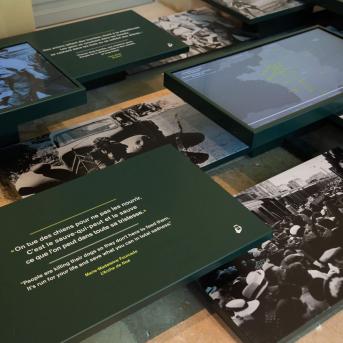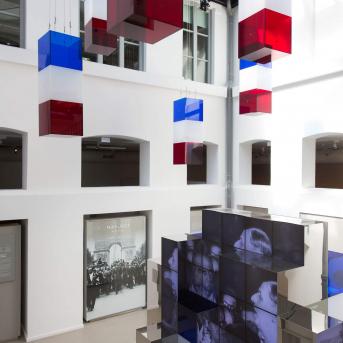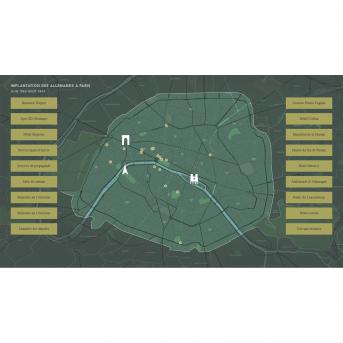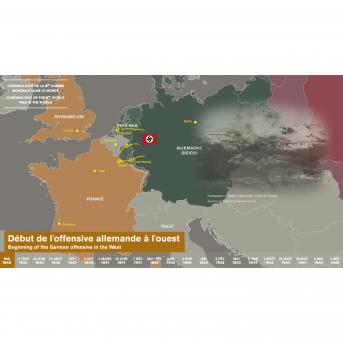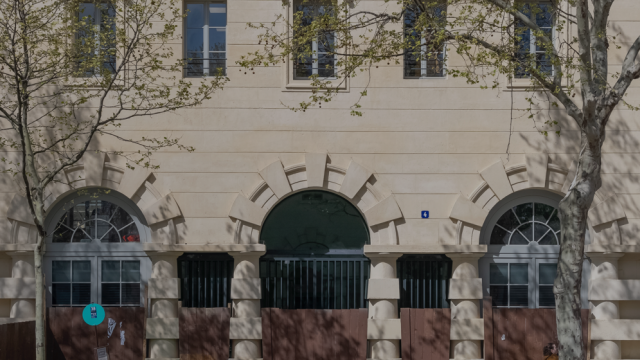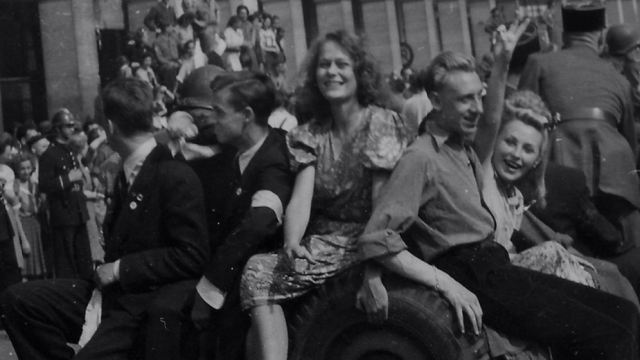Digital at the museum

As of August 25, 2019, the Museum of the Liberation of Paris – Museum of General Leclerc – Jean Moulin Museum features a new layout and new digital tools in the Ledoux pavilion at Place Denfert-Rochereau.
Rethinking outreach
Several digital highlights have been designed to museum visitors. Audiovisual features, interactive maps and cartographic narratives punctuate the pathway and enrich the discovery of this turning point in history.
Audiovisual installations
Numerous audiovisual installations in the rooms bring to life those who made Liberation history. Along their pathway, visitors are presented with eyewitness accounts by Resistance fighters that have been collected by the museum since 1994 to maintain a lasting record of this living memory. These audiovisual installations are illustrated by archives from the National Audiovisual Institute, Gaumont-Pathé and American archives (National Archives and Records Administration).
Room 3: Exodus
An installation in the pavilion vestibule shows the 1940 exodus on three screens, with quotes and reproductions.
The animated map retraces the paths taken by families on the roads of France to escape from the advancing Germans. An evocative soundtrack accompanies the discovery of this tragic period.
Room 4: The moment of choice
An audiovisual installation describes the positions of Marshal Pétain, who headed the government, General de Gaulle, Jean Moulin and Philippe de Hauteclocque from June 14-18, 1940, when faced with the German invasion. Screens dedicated to each figure confront their actions on these four days, up to the call launched by General de Gaulle, an excerpt of which is shown.
Room 11: The Liberation of Paris
As the highpoint of the exhibition, an audiovisual installation composed of twenty-four screens symbolizes France arisen and echoes the installation featuring the 1940 exodus. A multi-screen montage of the parade on August 26, 1944, shows General de Gaulle descending the Champs Elysées surrounded by an immense and joyful crowd.
Paris: Paris offended, Paris broken, Paris martyred, but Paris freed!
- German implantation in Paris: With the Occupation, everyday life in the French capital changed. Representatives of the German government installed themselves and took over official buildings, hotels and brasseries. The people of Paris were subject to requisitions and Nazi propaganda. A tactile interface offers the possibility of exploring this new reality along the streets of Paris.
- Persecution of Jews in Paris and the Paris region.
- Resistance and repression under the Occupation: Although some chose to collaborate, others risked their life in the shadows to combat the Occupier. Paris was the setting for their actions.
- Jean Moulin and his acquaintances under the Occupation: A central figure of the museum, Jean Moulin carried out resistance actions between France and England from 1940 to 1943. The interface proposes following in his footsteps and discovering those close to him.
- Leclerc and his men in Africa: As head of the 2nd Armored Division in Africa from 1940 to 1944, Leclerc is the museum’s second main figure. The map retraces the places and people tied to his military activity during these four years.
The visitor’s companion
Moulin and Philippe de Hauteclocque in the period between the wars in France, the collapse of the country in June 1940, the Occupation, interior Resistance and the fighting that continued until France was liberated, with Paris as its strongest symbol.
Two chronological pathways (corresponding to the time visitors have for seeing the exhibition) present the major moments of the era. At any moment, the app is able to reposition on all levels (including the Rol CP) using geolocation.
This visitor’s companion is designed for all audiences, as well as for teachers who would like to prepare a visit to the museum for a school group.
A special pathway for children is also proposed to families.

Visit to the Rol CP in mixed reality
The museum proposes visiting the Rol command post in mixed reality using Hololens glasses.
Life in the Rol CP during the insurrection was transcribed using a video archive filmed in the shelter on the day after the Liberation of Paris. Visitors are immersed in scenes inspired by this archive and can visualize them in the exact places where they were filmed in 1944.

